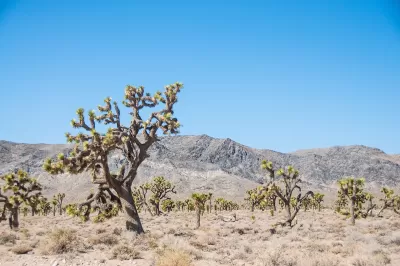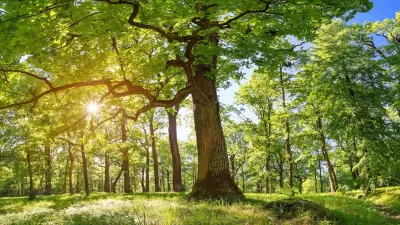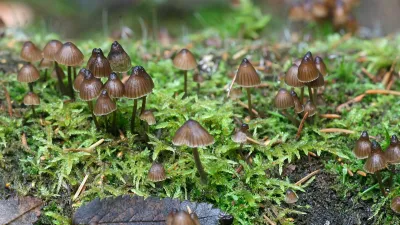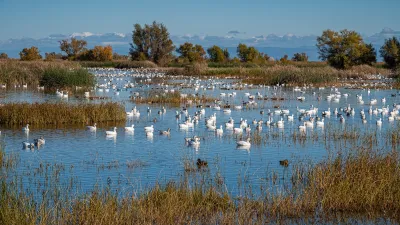The Lancaster Museum exhibit “Desert Forest: Life with Joshua Trees” aims to raise awareness of the ecological importance of Joshua trees and the threats they face from climate change in the Mojave Desert.

California State University, Northridge (CSUN) professor Jeremy Yoder hopes a new art exhibit, “Desert Forest: Life with Joshua Trees,” at the Lancaster Museum of Art and History will raise awareness about the threats facing Joshua trees. The exhibit, part of Getty’s PST Art initiative, features diverse artwork showcasing the iconic trees, with Yoder providing scientific expertise and contributing essays that explain their ecological importance and the challenges they face due to climate change. The exhibition highlights both the beauty and the vulnerability of Joshua trees in the Mojave Desert.
Yoder emphasizes the critical role Joshua trees play in the Mojave Desert ecosystem, serving as food and shelter for various species of birds, mammals, and reptiles. In one of his essays, he explains the mutual relationship between Joshua trees and Yucca moths and outlines the trees' evolutionary history. However, climate change is making the desert hotter and drier, causing young Joshua trees to struggle and die before they can fully mature. This issue, compounded by increasing wildfires, poses a serious threat to the species' survival.
The exhibition provides a platform for collaboration between artists and scientists, with Yoder contributing data that inspired some of the artwork. Yoder hopes the exhibit will resonate with local residents, drawing attention to the need for protecting Joshua trees, which hold both ecological and cultural significance. With ongoing research, including gene sequencing, Yoder is working to better understand how these iconic desert plants adapt to changing climates in an effort to ensure their long-term survival.
FULL STORY: CSUN Professor Hopes Lancaster Joshua Tree Exhibit Draws Attention to the Threats Faced by the Species

Study: Maui’s Plan to Convert Vacation Rentals to Long-Term Housing Could Cause Nearly $1 Billion Economic Loss
The plan would reduce visitor accommodation by 25,% resulting in 1,900 jobs lost.

North Texas Transit Leaders Tout Benefits of TOD for Growing Region
At a summit focused on transit-oriented development, policymakers discussed how North Texas’ expanded light rail system can serve as a tool for economic growth.

Why Should We Subsidize Public Transportation?
Many public transit agencies face financial stress due to rising costs, declining fare revenue, and declining subsidies. Transit advocates must provide a strong business case for increasing public transit funding.

How Community Science Connects People, Parks, and Biodiversity
Community science engages people of all backgrounds in documenting local biodiversity, strengthening connections to nature, and contributing to global efforts like the City Nature Challenge to build a more inclusive and resilient future.

Alabama: Trump Terminates Settlements for Black Communities Harmed By Raw Sewage
Trump deemed the landmark civil rights agreement “illegal DEI and environmental justice policy.”

Dear Tesla Driver: “It’s not You, It’s Him.”
Amidst a booming bumper sticker industry, one writer offers solace to those asking, “Does this car make me look fascist?”
Urban Design for Planners 1: Software Tools
This six-course series explores essential urban design concepts using open source software and equips planners with the tools they need to participate fully in the urban design process.
Planning for Universal Design
Learn the tools for implementing Universal Design in planning regulations.
City of Santa Clarita
Ascent Environmental
Institute for Housing and Urban Development Studies (IHS)
City of Grandview
Harvard GSD Executive Education
Toledo-Lucas County Plan Commissions
Salt Lake City
NYU Wagner Graduate School of Public Service





























